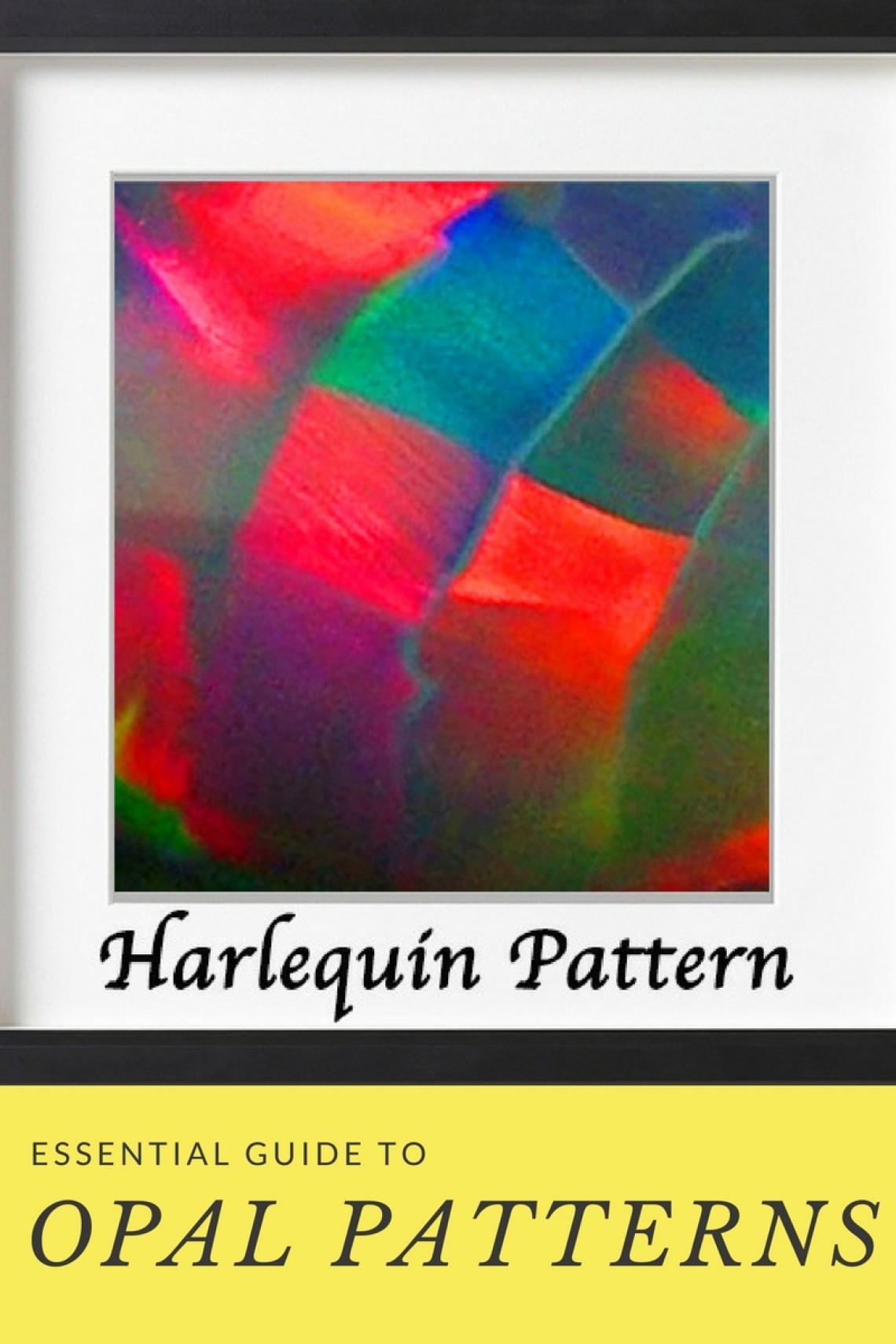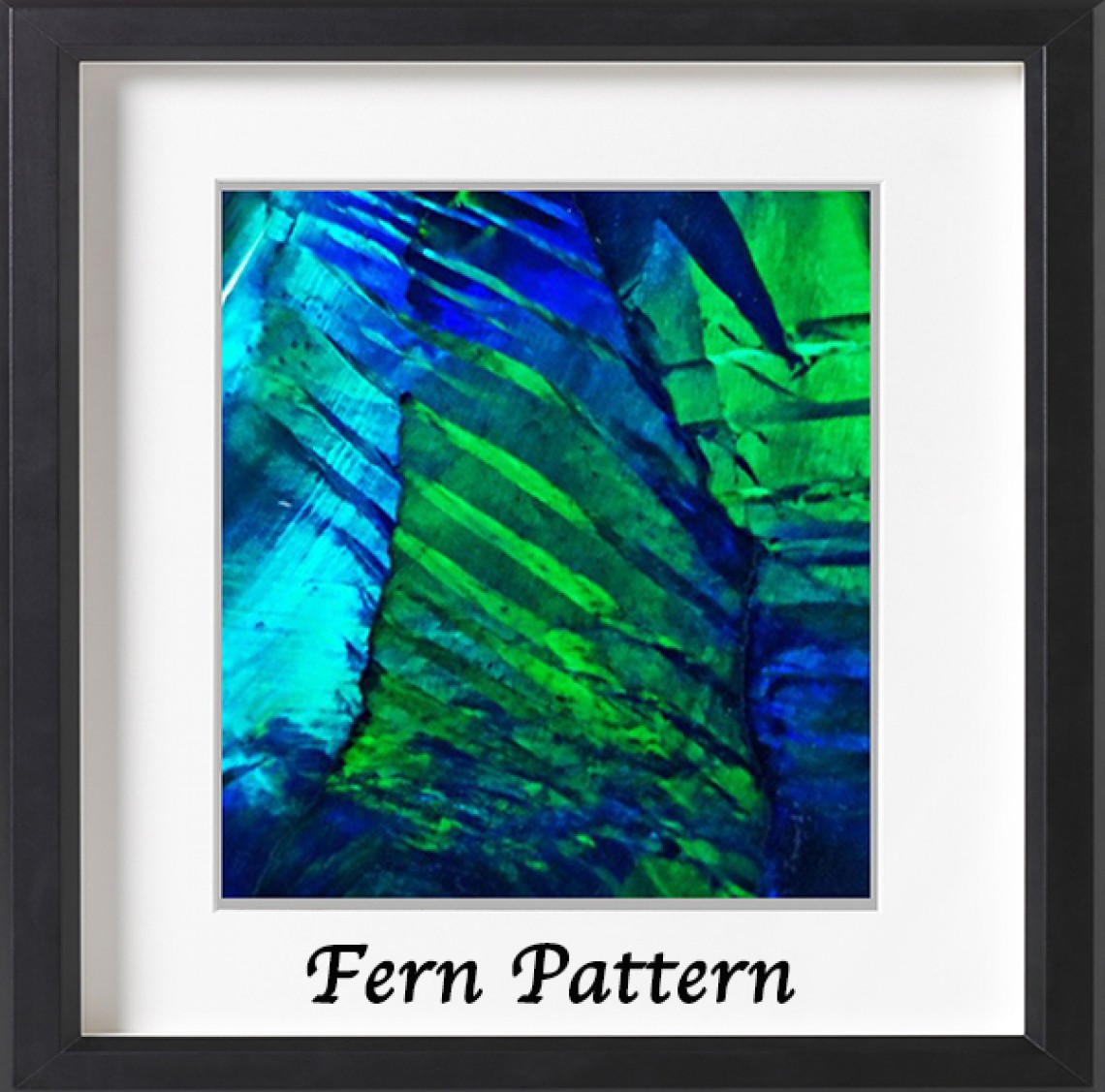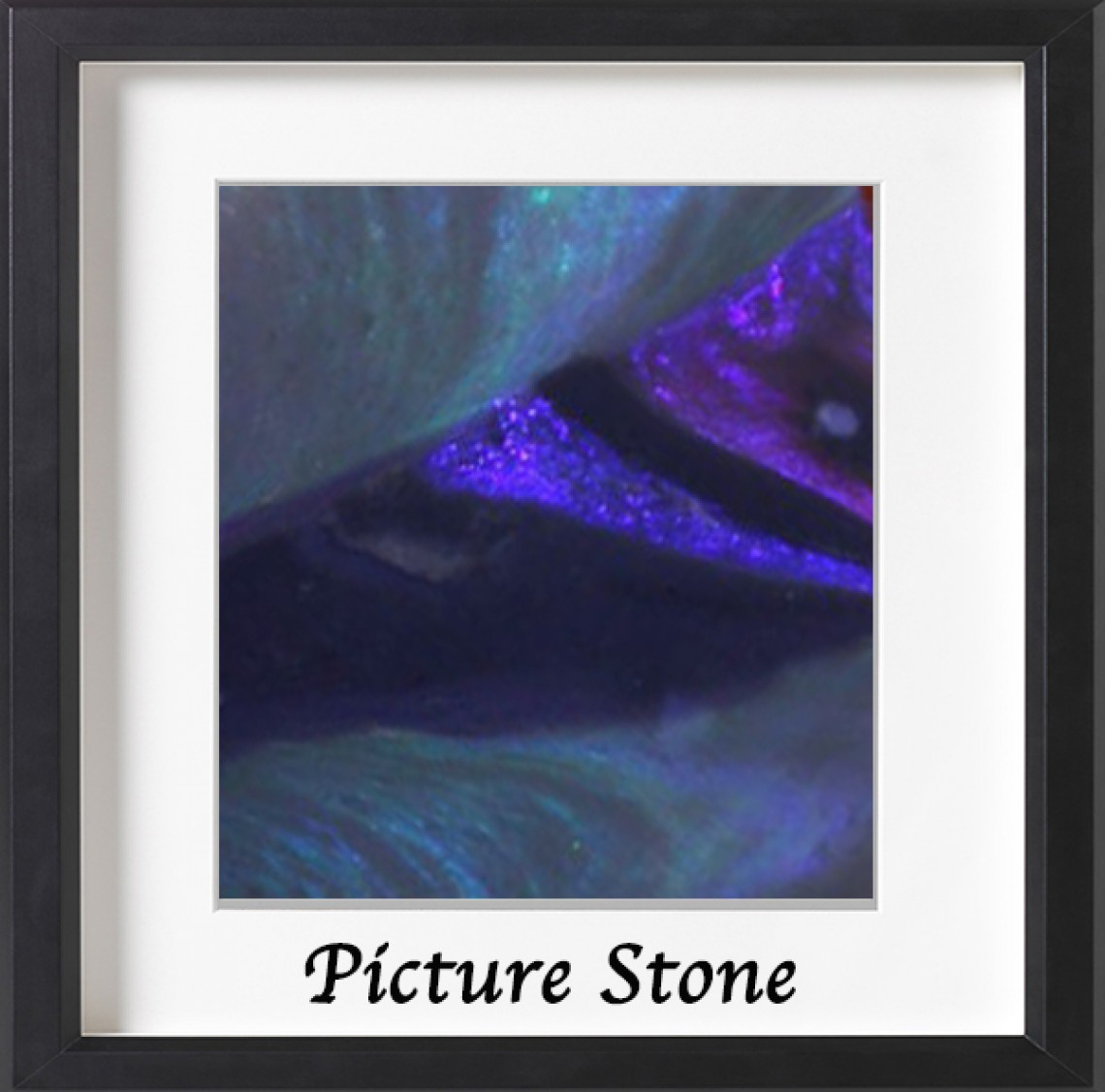
Veröffentlicht am 22nd Feb 2021
Geändert am 13th Dec 2025
Opalmuster – Der ultimative Leitfaden
 Der Opal gilt als Königin aller Edelsteine, manche bezeichnen ihn sogar als König. Seine Einzigartigkeit in der Welt der Edelsteine liegt darin, dass es selten ist, qualitativ hochwertige Opale mit exakt derselben Farbe und solch unglaublichen Mustern zu finden. Zwar gibt es wissenschaftliche Forschungen zur Entstehung dieser Muster, doch die komplexe Struktur des Opals ist noch nicht vollständig entschlüsselt. Sicherlich möchten unsere Leser mehr über die wunderschönen Muster im Opal erfahren, und wir können später darauf eingehen, wie diese Muster entstehen.
Der Opal gilt als Königin aller Edelsteine, manche bezeichnen ihn sogar als König. Seine Einzigartigkeit in der Welt der Edelsteine liegt darin, dass es selten ist, qualitativ hochwertige Opale mit exakt derselben Farbe und solch unglaublichen Mustern zu finden. Zwar gibt es wissenschaftliche Forschungen zur Entstehung dieser Muster, doch die komplexe Struktur des Opals ist noch nicht vollständig entschlüsselt. Sicherlich möchten unsere Leser mehr über die wunderschönen Muster im Opal erfahren, und wir können später darauf eingehen, wie diese Muster entstehen.
Das mit Abstand wertvollste und seltenste Muster ist der echte Harlekin-Opal . Dieses Muster ist extrem selten, und wir verwenden den Begriff „echtes Muster“, da manche Opale zwar ein oder zwei harlekinartige Formen aufweisen, diese aber nur in einem kleinen Bereich vorkommen.
Wie selten ist der Harlekin-Opal?
Die meisten Opalgräber in Lightning Ridge werden in ihrem ganzen Leben nie einen Opal mit Harlekinmuster abbauen! Rot auf Schwarz ist die seltenste und teuerste Farbkombination, daher ist der Stein in Kombination mit dem Harlekinmuster wahrhaft atemberaubend.
Die Opalgräber in Lightning Ridge müssen durchschnittlich über eine Tonne Erde bewegen, um einen einzigen Opal zu finden. Um einen Opal mit Harlekinmuster zu finden, müssen sogar Tausende Tonnen Erde bewegt werden.
Bis heute haben wir noch nie einen Boulder-Opal mit einem echten Harlekinmuster gesehen.
Nur wenige äthiopische Opale weisen ein echtes Harlekinmuster auf.
Was ist ein Harlekin-Opal?
Dieser einzigartige Opal weist sich wiederholende, längliche Quadrate oder Rauten auf. Er ist in der Natur sehr selten zu finden.
Zu den Klassen von Harlekinmustern gehören
- Pfauenharlekin
- Hexagonaler Harlekin
- Flagstone Harlekin
- Schachbrett-Harlekin
Liste der Opalmuster mit Bildern
Bei anderen Opalmustern besteht mehr Flexibilität hinsichtlich der Definition. Manche Opale weisen zwei oder mehr Muster oder Farben auf, daher gibt es keine exakte Bezeichnung für Opale mit Musterkombinationen.
Manche Namen können sehr kreativ sein, wenn sich der Besitzer in seinen Opal verliebt. Wir haben die folgenden Bilder als gute Beispiele für jedes Muster in alphabetischer Reihenfolge zusammengestellt.
Bambusblattmuster
Leuchtende Farbadern, die an Bambussprossen erinnern und sich auf natürliche Weise in Potch oder Vollopal bilden können.

Blockmuster
Große Muster bilden quadratische, rechteckige oder freie Formen, die den größten Teil des Opals bedecken.

Breitblitz
Dieses Muster weist große Farbflecken auf, die im Opal vorherrschen.

Katzenauge
Das rollende Katzenaugenmuster ist selten, da der Opal eine hohe Cabochonform aufweisen muss. Beim Drehen des Opals bildet der Farbblitz eine dünne Linie, die ihn durchzieht.

Kathedralenmuster
Seltenes Muster im Boulder-Opal, meist gebildet durch Holz oder Pflanzenmaterial

Spreumuster
Dies sind Linien, die wie Stroh-Störche als Spreu-Linien in verschiedenen Richtungen aussehen.

Chinesische Schrift
Wie der Name schon sagt, weisen diese Opale Merkmale auf, die chinesischen Schriftzeichen ähneln, und kommen in natürlichen Formationen vor.

Drachenhaut
Diese Beschreibung wird für äthiopische und Boulder-Opale mit einem schlangenartigen Muster verwendet.

Blumenmuster
Beschrieben mit fließenden Mustern, die an Blumen erinnern, und meist in mehreren Farben gehalten, ähnlich einem Blumenbeet.

Farnmuster
Formation ähnlich wie Pflanzenfarne mit Zinken vom zentralen Storch

Federmuster
Ähnliches Muster wie Pfauenfedern. Das Federmuster beginnt in der Mitte und strahlt wie einzelne Federn nach außen.

Bienenwabe
Dies ist eines der begehrtesten Muster für äthiopische Opale, wobei Form und Größe des Wabenmusters stark variieren können. Es ähnelt einem Bienenstock und besteht meist aus sechseckigen Formen mit nahtlosem Muster.

Makrelenmuster
Wunderschöne, seltene Rollmuster, wie sie bei Makrelen vorkommen. Die Bandmakrele weist ein fließendes, zusammenhängendes Muster auf, ähnlich wie bei Makrelen.

Galaxienmuster
Ähnliches Muster wie bei Bildern von Sternbildern mit kleinen, hellen Farbtönen.

Neonblitz
Dieses Licht muss die hellste B1-Klasse aufweisen, um als Neonlicht zu gelten; es handelt sich also um ein seltenes Blitzmuster, das den gesamten Opal bedeckt.

Patchwork
Wie der Name schon sagt, handelt es sich um mehrere Muster in einem einzigen Opal, die eng miteinander verwandt sind und Quiltmustern ähneln.

Stiftfeuer
Kleine, leuchtende Muster, meist in verschiedenen Farben. Es können auch kleine, stecknadelkopfgroße Punkte in derselben Farbe auftreten, die eine säulenartige Struktur bilden. Das Muster ist aus allen Richtungen sichtbar.

Puzzle-Muster
Wird bei äthiopischen Opalen verwendet, um eine Mischung von Mustern zu beschreiben, die sich gegenseitig ergänzen und wie Puzzleteile zusammenpassen.

Bandmuster
Diese Formation ähnelt auf Opal gerollten Bändern in verschiedenen Farben.

Haut zu Haut
„Skin to skin“ ist die in Brasilien gebräuchliche Bezeichnung für Kristallopal, bei dem die Oberseite und Unterseite des Opals unterschiedlich groß sind und der klar oder mit Potch-Struktur versehen sein kann. In Australien bezieht sich der Begriff eher auf Rohopal, der überwiegend Opal und weniger Potch-Struktur aufweist.

Schlangenhaut
Diese Beschreibung dient der Charakterisierung von schlangenartigen Mustern auf äthiopischen Opalen. Auch Boulder-Opale können ein solches Muster aufweisen, dies ist jedoch selten.

Puzzlemuster
Wird für erstklassige schwarze Opale mit unglaublichen Farben ohne systematisches Muster verwendet.

Glanzmuster
Dies wird als ein übermäßig ähnliches, übereinstimmendes Muster mit ausschließlich gleichfarbigen Elementen ohne erkennbares Muster betrachtet.

Spinnennetz
Dieses Muster ähnelt Spinnweben und besteht aus weißen, punktierten Linien im Opal oder kann auch aus farbigen Adern bestehen.

Sternenstaubmuster
Kleine Muster wie Galaxien von Sternen

Adernmuster
Mehrere Adern ähnlicher oder unterschiedlicher Farben in horizontalen oder vertikalen Linien, wie sie häufig bei Boulderopal vorkommen.

BEZEICHNUNGEN, DIE SICH MEHR AUF DIE FARBE DES OPALS BEZIEHEN ALS AUF DAS MUSTER
In der Opalindustrie hört man diese Worte, um einen Opal zu beschreiben.
Mehrere Brände
Es gibt zwei oder mehr Farben, die sich ergänzen, die eine bestimmte Richtung vorgeben oder auffällig sein können. 
Pastellrot
Oder Pastellrosa. Diese Farbe kann von einem zarten Rotton bis zu rosafarbenen Nuancen reichen. 
Bildstein
Manche Steine weisen eine gemischte Formation auf, und manchmal sind im Opal Bilder oder Landschaftsszenen zu erkennen.

Doppelseitig farbig
Unterschiedliche Farben auf beiden Seiten

Schwarzer Kristall
Diese Opale entstehen zumeist als reine Kristallopale mit wenig oder gar keinem Einschluss, weisen aber einen dunklen Körperton (N1) auf. Die meisten Kristallopale haben einen Körperton von N5 bis N7, daher ist ein dunkler Körperton bei Kristallopalen selten.
Gesättigt
Viele Minenarbeiter verwenden diese Terminologie, je nachdem, ob der Opal eine volle Farbe oder ein volles Muster aufweist.

Dunkler Opal
Dies kann sich auf halbschwarze Opale aus Lightning Ridge bis hin zu dunkel gefärbten äthiopischen Opalen beziehen. Da äthiopische Opale von gemmologischen Fachgesellschaften nicht als schwarz klassifiziert wurden.

Gemalte Dame
Diese Opale stammen aus Andamooka und sind naturbelassen, sie sind nicht handbemalt.

Palette Opal
Dies wurde als Farbe verwendet, bezieht sich aber eigentlich auf die Form des Opals, wie sie beispielsweise auf einer Künstlerpalette zu finden ist.
Geräuchertes Schwarz
Dieser Begriff beschreibt äthiopischen Kristallopal, der behandelt wurde und gemeinhin als geräucherter Opal bekannt ist.

Elektrisches Blau
Diese Farbformation beschreibt eine hellere Farbe als normales Meeresblau.

Fingerabdruckmuster
Dieses Muster ist sehr selten. Wir haben es bisher nur bei einem einzigen mexikanischen Opal gesehen. 
Blitzfeuer
Es handelt sich dabei nicht um ein Muster, sondern es zeigen sich kräftige Feuerfarben, wenn der Opal bewegt wird.
Richtungsgebunden
Durch diese Formation ist der Opal nur in einer bestimmten Position starkem Feuer ausgesetzt, weshalb diese Opale ideal für Anhänger geeignet sind.
Rolling Flash
Dies beschreibt, wie die Farben sichtbar werden, wenn man den Opal bewegt. Ein mögliches Muster wäre ein rollendes, breites Blitzmuster.
Transparenz
Dies bezieht sich auf Kristallopal und kann halbdurchsichtig sein.
Gemeiner Opal
Sehr einfach gehalten, wenig Farbe oder Muster, niedrige Qualität.
Kirschopal
Einige mexikanische Opale haben eine kirschrote Farbe, und das ist eine kreative Beschreibung für diesen Opal.
Zitronenopal
Dieser Opal weist zitronengelbe Farbtöne auf und kommt hauptsächlich in Kristallopalen vor.
Milchopal
Der Begriff „Milchy Opal“ bezeichnet einen milchig-weißen gewöhnlichen Opal und wird hauptsächlich für Opale aus Südaustralien verwendet.
Regenbogenopal
Kostbarer Opal, bei dem das Farbenspiel in geschwungenen Bändern wie ein Regenbogen zu sehen ist.
Yowah- und Koroit-Opalmuster

Wie entstehen Muster in Opalen?
Manchmal bilden Potch-Linien einzigartige Muster, wie die oben beschriebenen. Diese Linien können sogar zwei unterschiedliche Farben trennen oder in Opal ein Muster erzeugen, das überwiegend eine Farbe aufweist. Opal besteht aus winzigen Siliziumdioxid-Kügelchen, die in einem dreidimensionalen Gitter angeordnet sind. Die Zwischenräume und die Größe der Kügelchen beeinflussen die Lichtbeugung und somit Farbe und Muster. Daher ist die Größe der Kügelchen entscheidend für ein gutes Muster.
Was ist Beugung?
Beugung und Brechung bezeichnen beide die Ablenkung von Licht. Beugung ist die Aufspaltung eines Lichtstrahls in Bereiche unterschiedlicher Wellenlängen oder die Streuung des Lichts. Die Form des Musters beeinflusst den Preis eines seltenen Opals erheblich, wobei die wertvollsten Opale meist Harlekin-, Makrelen-, Chaff- und Rolling-Catseye-Opale sind.
Opal kaufen
Suche nach Opal Encyclopedia
In Verbindung stehende Artikel
Der Boulder-Opal zählt zu den wertvollsten und am meisten unterschätzten Opalen auf dem Markt. Erfahren Sie mehr über diesen einzigartigen Opal und entdecken Sie die wunderschönen Steine in unserem Angebot.
29th May 2019
In dieser Anleitung erfahren Sie, wie Sie Boulder-Opal schleifen und polieren. Das Schleifen dieses Steins kann knifflig sein, daher geben wir Ihnen hier einige Tipps.
23rd May 2018
Neue Artikel
Schwarze Opale sind die begehrteste Opalart. Ihre tiefe Basis erzeugt ein regenbogenfarbenes Farbenspiel an der Oberfläche. Entdecken Sie die Verwendung, Eigenschaften, Geschichte und den Wert schwarzer Opale!
7th Dec 2025
Erfahren Sie, wie Opale bewertet werden und welche Faktoren ihren Preis beeinflussen. Von Farbe und Leuchtkraft bis hin zu Schliff und Herkunft – lernen Sie, wie die verschiedenen Opalarten bewertet werden, inklusive Preisbeispielen.
19th Jul 2023
Begeben Sie sich auf eine Reise und erfahren Sie von unserer Gastautorin Vivien Schapera von Crystal Healing Techniques mehr über die Heilkraft von Opalen!
20th May 2023
Artikelkategorien
All there is to know about Opals including Black Opals, Ethiopian Opals & Boulder Opal
14 Artikel
Check out our fascinating information and articles on all things amazing in the Opal world
41 Artikel
Opal Auctions sellers who are approved as opal Verified Sellers
4 Artikel





